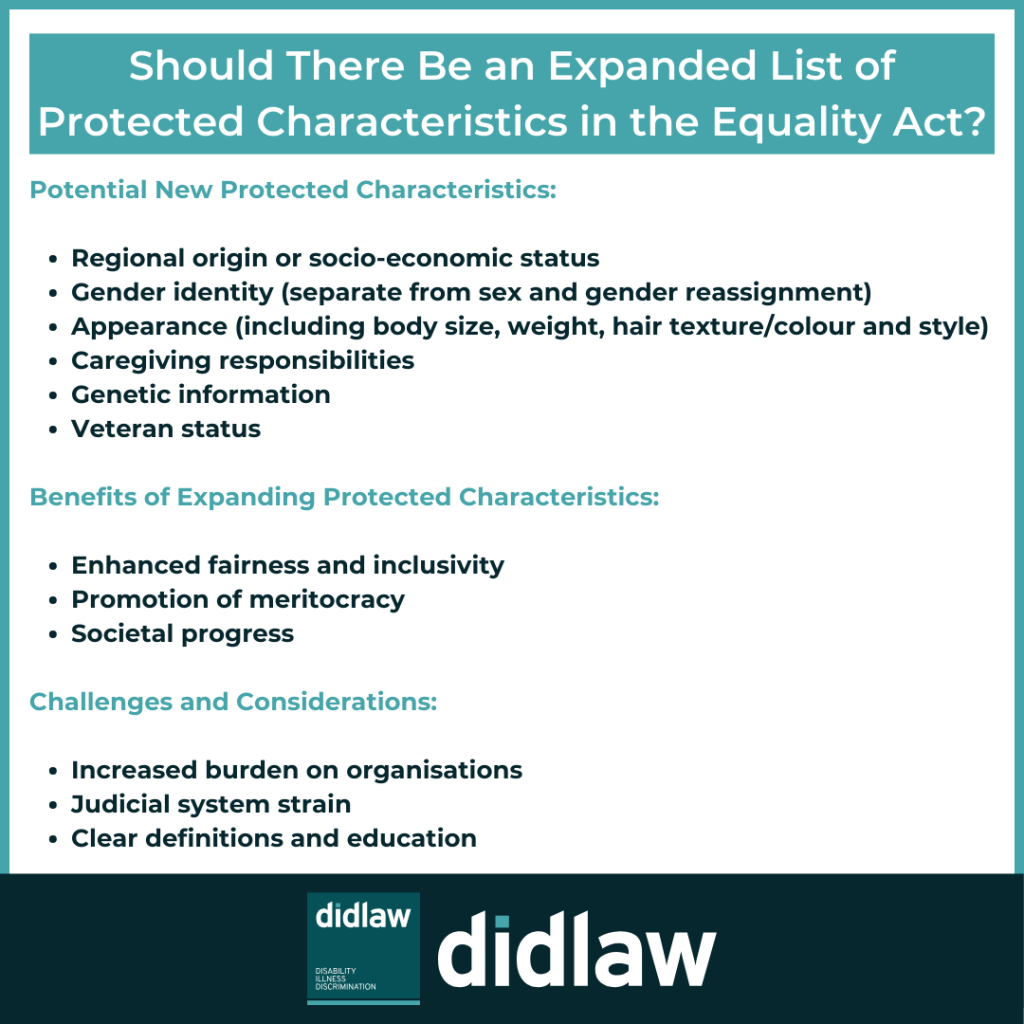
The passage of the Equality Act 2010 into law was one of the last, and among the most significant actions of the Brown (Labour) government. It consolidated various statutes and statutory instruments, setting out nine ‘protected characteristics’. In recent years, there have been calls to expand the list of protected characteristics in the UK’s Equality Act 2010 to better protect individuals from discrimination on the basis of a wider range of personal characteristics.
In January this year, the government confirmed that it would not be amending the Equality Act to add menopause as a protected characteristic. There are however other potential candidates that could be considered for addition, including the following:
- Regional origin or socio-economic status
- Gender identity (separate from sex and gender reassignment)
- Physical appearance (including body size and weight, hair texture / colour and style)
- Caregiving responsibilities
- Genetic information (as genetic records and testing become more prevalent)
- Veteran status
Benefits
The purpose of the Act is to ensure that all individuals, regardless of their innate personal characteristics, are treated equally and fairly. For example, adding regional origin as a protected characteristic could help to address issues related to discrimination due to regional accents, which studies have shown can affect income and career prospects. This would have a knock-on effect on income inequality and social mobility. Similarly, adding gender identity as a protected characteristic could help to protect non-binary people.
Expanding the list of protected characteristics in the Equality Act would ideally push employers to create ever more meritocratic methods of evaluation for employees and service users. However, legal protection is only as good as the enforcement mechanism, and must be backed up with expanded resources for the Employment Tribunals.
Challenges
Potential challenges to expanding the list of protected characteristics include legitimate arguments about the additional burdens on organisations to comply with an expanded list of groups requiring protection. However, these challenges should in any case only be made after careful consultation to address any concerns.
There would likely also be concerns raised about the ability of already stretched judicial resources in hearing cases under new characteristics. The Employment Tribunals already have a historically high backlog, and the system is under considerable strain to address already existing cases.
Overall, we consider that there are strong arguments in favour of expanding the list of protected characteristics in the Equality Act 2010. Doing so would help to ensure that as many people as possible are treated fairly and without prejudice. This is a worthy aim and, given the attention that organisations must already give EDI policies, in our assessment the potential positive effects would outweigh any period of adjustment.
This blog is written by Matthew Manso de Zuniga, trainee solicitor for didlaw
